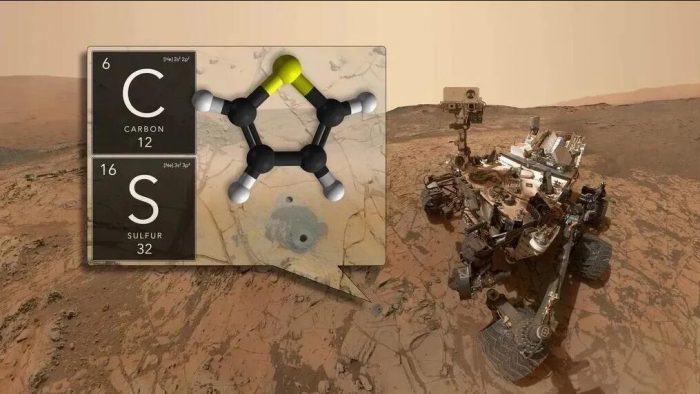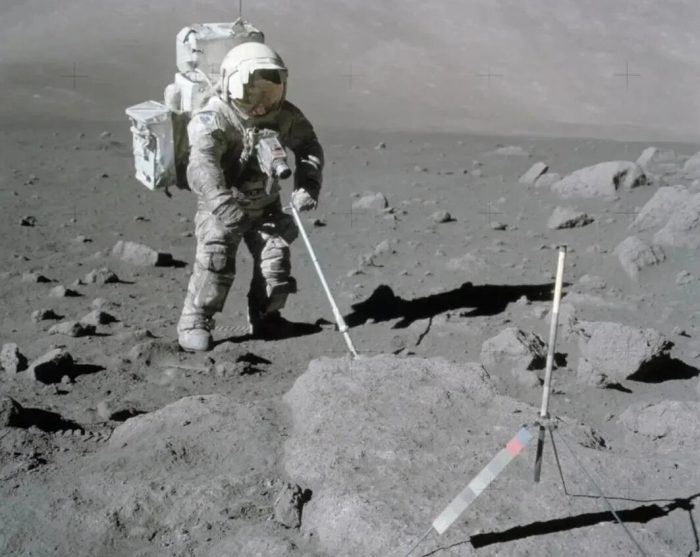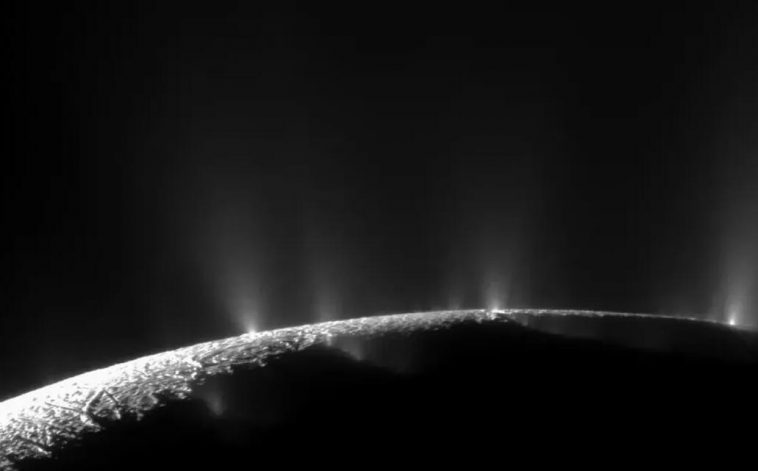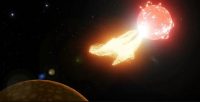This discovery has not yet been organized into a paper and officially published, but it has quickly triggered media reports and the public’s thousands of reverie about extraterrestrial life.
What is special about amino acids in life? Which amino acids did Hayabusa2 discover this time? Are amino acids rare on extraterrestrial planets? What does the discovery of extraterrestrial amino acids really mean? How far is it from amino acids to extraterrestrial life?
Amino acids: the “bricks” of the carbon-based building of life
Liquid water and organic matter are necessary for the birth and prosperity of carbon-based life on our planet. Therefore, whether there is water and organic matter on a planet naturally becomes an important reference for us to explore whether there is life on other planets in the universe.
But in fact, the results of deep space exploration in recent decades have told us unmistakably that water is not rare. There are various forms of water on the moon, Mars and many asteroids [2-4]; under the ice layer of the icy moons of Jupiter and Saturn in the outer solar system, there is a vast ocean of liquid water and even the power supply of suspected deep-sea hot springs The system is the key target of the next deep space exploration mission to find extraterrestrial life.
Organics are not uncommon.
There is no shortage of organic matter on comets and asteroids represented by carbonaceous asteroids (C-type asteroids); the Curiosity rover has clearly detected a variety of thiophenes (C4H4S), aromatic , aliphatic complex organic matter [5].

So why haven’t we found any life on other planets so far? Are these organics “not enough”?
Looking back at ourselves, the operation of this complex system of life on earth requires a “special” organic matter-amino acid.
The basic structure of amino acids is not complicated, containing carbon (C), hydrogen (-H), amino group (-NH2), carboxyl group (-COOH) and an arbitrary side chain group (-R). Obviously, by attaching different -R groups, a rich variety of amino acids can be obtained.
Through dehydration, multiple amino acids can be connected in series to form peptide chains like chain beads; long peptide chains can be further folded and combined to form various proteins.
However, for life on earth, although there are hundreds and thousands of amino acids in nature, there are usually only 20 amino acids used to make up proteins, which are the so-called “20 essential amino acids” or “proteinogenic amino acids”.
Other amino acids are not useless to life, some of them can participate in the operation of “life factories” in the form of short peptide chains (small peptides).
A brief introduction to Hayabusa2 for new readers: The JAXA Hayabusa2 probe was launched in December 2014 and arrived at its target, the near-Earth asteroid Ryugu, in June 2018.
From 2018 to 2019, Hayabusa-2 carried out a series of accompanying remote sensing detections on Ryugu, dropped 1 lander and 3 patrollers, and collected materials on the surface of the asteroid and deep underground through two landing samples.
On December 6, 2020, Hayabusa 2 successfully returned the return capsule loaded with asteroid samples to Earth, and then set off for the next detection target-the fast-rotating asteroid 1998 KY26 with a diameter of about 30 meters (planned on July 2031). month arrives).
Hayabusa 2 originally planned to retrieve 100 mg of asteroid Ryugu samples, but the actual “unpacking” weighing results showed that a total of 5.4 grams were recovered, more than 50 times the planned sampling amount.
As mentioned at the beginning, this discovery has not yet been formally published as a paper, only in an abstract titled “Soluble Organic Compounds on Asteroid 162173 Ryugu”[1] published at this year’s Lunar and Planetary Science Conference (LPSC). A brief introduction was made. The research was led by Professor Hiroshi Naraoka from Kyushu University, Japan, and the Hayabusa 2 sample analysis team was completed.
The abstract points out that the carbon (3.76wt%), hydrogen (1.14wt%), and nitrogen (0.16wt%) contents in the A0106 sample are higher than all known carbonaceous chondrites (wt is the mass percentage); In the hot water hydrolyzed extract, more than 10 amino acids were found, including both protein amino acids (eg, glycine, α-alanine) and non-protein amino acids (eg, β-alanine, α-aminobutyric acid). (PS: The actual observation data and description are subject to the official published papers in the future)
The discovery of amino acids on asteroids does mean that we are a little closer to life than the discovery of other “ordinary” organic matter.
But the significance of this discovery does not lie in the “first discovery of amino acids”. After all… this is not the “first time” that amino acids have been found on extraterrestrial planets.
Amino Acids on Extraterrestrial Planets
Since the 1970s, people have successively discovered many evidences that amino acids may exist on extraterrestrial planets, and have been questioning and testing these evidences.
As early as the Apollo era, scientists found some amino acids in Apollo lunar samples, including glycine, alanine, glutamic acid, aspartic acid, serine and threonine, etc. The highest content was 70 ppb ( 1 ppb = 1 part in 100,000) [7].

But the process of sample collection, storage, and analysis more than 50 years ago was much rougher than it is now. For example, some samples from Apollo 15, 16, and 17 were once stored in the same laboratory as two samples of pure peridotite from the earth[8]—it is unclear whether this amino acid came from the moon or not. .
However, the origin of amino acids can also be judged by the “chirality” in the molecular structure: amino acids other than glycine (-R group is H) have L-type (left-handedness) and D-type ( Right-handedness) Two isomers that have the same molecular formula and are mirror-symmetrical in structure, like our left-handed and right-handed, that appear to be exactly the same, but can never be superposed by rotation.
The natural amino acids on the earth are mainly L-type (left-handed) amino acids; the proteins in life on earth, except for glycine, are all composed of L-type amino acids, and there is no D-type (but some small peptides may contain both L-type amino acids amino acids also contain D-amino acids). And from extraterrestrial, non-biologically produced amino acids, usually the ratio of D and L forms is equal, this feature is also called “racemic”.
In a re-analysis of amino acids in Apollo samples published in 2016 [8], a wider variety of amino acids (e.g. glycine, DL-alanine, DL-aspartic acid, DL-glutamic acid) were found , DL-serine, L-threonine, and L-valine, as well as some amino acids not previously found in lunar samples, such as α-aminoisobutyric acid, DL-β-amino-n-butyric acid, DL-α -amino-n-butyric acid, γ-amino-n-butyric acid, β-alanine and ε-amino-n-hexanoic acid, etc.), of which L-type protein amino acids are significantly more than the corresponding D-type amino acids, indicating that the Apollo lunar samples contained Protein amino acids are likely to come from the pollution of the earth. However, the D- and L-forms of alanine and beta-aminobutyric acid were comparable in the samples, suggesting that some amino acids may still come from extraterrestrial sources.
More amino acids are found in meteorites, especially carbonaceous chondrites. This type of meteorite is thought to come from fragments of a C-type asteroid (Ryugu is a C-type asteroid), and has not undergone any thermal metamorphism process – that is to say, this type of meteorite is very old and may reflect the original material composition of the parent asteroid .
The most typical example of this is probably the Murchison meteorite. In 1969, this carbonaceous chondrite with a mass of more than 100 kilograms fell in the town of Murchison, Victoria, Australia. “polluted.
In 1970, scientists discovered 5 protein amino acids (glycine, alanine, valine, proline and glutamic acid) and 2 non-protein amino acids (N-methylglycine and α-amino acid) in the Murchison meteorite. Aminobutyric acid) [9], in 1971, 1 protein amino acid (aspartic acid) and 6 non-protein amino acids (β-alanine, α-amino-butyric acid, β-amino-n-butyric acid) were found. , γ-amino-n-butyric acid, isovaleric acid, and peregrine) [10]. (PS: In a reanalysis of the Murchison meteorite published in 2010, more than 70 amino acids were found, which will be discussed later [11].)
Then in 1971, scientists used a similar method to analyze another carbonaceous chondrite that was almost uncontaminated by the earth after the fall, the Murray meteorite (Murray meteorite), and found 6 kinds of protein amino acids. (glycine, alanine, valine, proline, aspartic acid, and glutamic acid) and 11 non-protein amino acids (isovaleric acid, alpha-aminobutyric acid, N-methylalanine, alpha -amino-n-butyric acid, N-methylglycine, N-ethylglycine, norvaline, beta-amino-n-butyric acid, piperonic acid, beta-alanine and gamma-amino-n-butyric acid) [12 ].
More importantly, the D- and L-forms of chiral amino acids were comparable in the Murchison and Murray meteorite samples, suggesting that these amino acids likely came from abiotic sources other than Earth; and all amino acids found in Murchison meteorites species are found in Murray meteorites, which may imply that certain amino acid species are prevalent in carbonaceous chondrites and their parent asteroids.
Of course, no matter how fast the meteorite is found after it hits the ground, the possibility of being contaminated by organic matter on the earth cannot be absolutely ruled out. In contrast, amino acids detected directly on extraterrestrial planets, or recovered from extraterrestrials with more advanced sampling techniques, are obviously more convincing.
In 2016, scientists used the Rosetta detector ROSINA mass spectrometer to detect volatile glycine on comet 67P/Churyumov [13].
This is the comet composition directly obtained by the probe in outer space by means of remote sensing. In theory, there is no possibility of being contaminated by earth materials. This also confirms that the glycine [14] that scientists found in the comet samples collected by Stardust more than ten years ago may not be contamination of the earth, but actually exists on the comet 81P/Wild.
Glycine is the simplest amino acid after all, are there more complex amino acids on extraterrestrial planets?
The results of the analysis of the Hayabusa samples went one step further. Due to the bumpy exploration and sampling journey of Hayabusa No. 1, the samples it brought back from the near-Earth asteroid Itogawa were also polluted by a small amount of earth, but scientists still detected some non-protein amino acids that are not common on earth. For example, β-alanine and a small amount of β-aminobutyric acid and β-amino-n-butyric acid, and the latter two are racemic mixtures, in line with the characteristics of extraterrestrial non-biological origin [15].
But Itokawa is an S-type (silicon) asteroid, which is not an asteroid type rich in organic matter, and no reliable extraterrestrial protein amino acids have been found.
In contrast, the samples brought back by Hayabusa2 from the C-type asteroid Ryugu this time are more reliable, and more types of amino acids have been found, and protein amino acids from extraterrestrials have been clearly found.
This is also the first time that human beings have confirmed the discovery of protein amino acids in samples collected from extraterrestrials. (You see, as long as there are enough attributives, this “first” can always be obtained)
Could the amino acid discovered by Hayabusa 2 this time be pollution of the earth? The probability is very low.
On the one hand, the sampling of Hayabusa 2 was very successful, the samples were well packaged, and there was no sample contamination incident during the whole process; the samples have been strictly isolated from the earth’s materials after recovery, and have never been exposed to the earth’s air [6].
On the other hand, all extraction procedures for this sample analysis were performed on an ISO5 (Class 100) clean bench in an ISO6 (Class 1000) clean room, and all glassware used in the study was heated at 500°C prior to contact with the sample. Bake in air for 3 hours to avoid possible organic contaminants in the container samples [1].
In addition, among the amino acids detected by Hayabusa2, the chiral amino acids in the sample are all racemic mixtures (the ratio of L-type and corresponding D-type amino acids is about 1:1) [1], indeed It can be regarded as an extraterrestrial amino acid hammer plus.
However, compared to the “first time” that needs to be added to obtain the number of attributes, the more important significance of the discovery of extraterrestrial amino acids by Hayabusa 2 this time is to prove to us—
Look no further, amino acids are not uncommon on extraterrestrial planets, just like water and other organic matter.
If we agree that life forms outside the earth are still carbon-based life, and amino acids are also the “key building blocks” that constitute the alien “life building”, then we have to admit that having “life building blocks” is probably not a A very high threshold.
As the Miller-Urey experiment showed 70 years ago.
In 1952, in the basement of the Chemistry Building at the University of Chicago, Stanley Miller, under the guidance of his mentor Harold Urey, did an experiment [16]: they injected some water into a spherical glass container to simulate the ocean, and through A glass vessel was heated to simulate the sun, a mixture of water, methane, ammonia, and hydrogen formed the “atmosphere” (which was considered the most likely composition of Earth’s early atmosphere at the time), and electric sparks were used to simulate lightning.
After a week, the water in the container turned reddish-brown, and at least 5 amino acids were detected in the solution: glycine, alpha-alanine, beta-alanine, aspartic acid, and alpha-aminobutyric acid, among others complex organic matter.
In the following 70 years, many scientists have reproduced or improved this experiment, and the results have been confirmed without exception: simple inorganic and organic substances do not require harsh experimental conditions or even long reaction times. It is possible to produce a variety of complex organics including amino acids.
So we come back to this crucial question: If there are a lot of planets in the universe holding “building blocks of life”, why have we not found any traces of extraterrestrial life yet?
The Fermi Paradox: Where are they all?
One day in 1950, in a chat among a group of physicists about extraterrestrial life, Enrico Fermi thought: Since there are so many planets in the universe, and these planets have had such a long time to evolve life and even civilization, then Probably, extraterrestrial civilizations should have spread throughout the universe.
Then, he asked the question: where are they all?
Why haven’t we detected any extraterrestrial civilization yet, and never have an extraterrestrial civilization come looking for us?
This paradox has become more and more thought-provoking with astronomical discoveries in the following decades.
On the one hand, the Miller-Urey experiment and the continuous discovery of complex organic molecules on extraterrestrial planets tell us that it is not difficult and uncommon to produce amino acids or even more complex organics on a planet;
On the other hand, with the use of exoplanet detectors such as the Kepler telescope and the TESS satellite, more than 5,000 exoplanet systems of various colors have been discovered, and this number is growing rapidly.
If the birth and evolution of life on Earth is not a special case, then we may indeed believe that there is always a probability that extraterrestrial life and even extraterrestrial civilization will emerge on so many planets in the universe.
Why is our planet so special if no other planet has ever given birth to life? What is the key to the birth of life?
It is true that having “bricks and stones” does not mean that a “house” can be built. So the real origin of life problem may not be how to generate the bricks and stones that make up life, but how to assemble these bricks and stones into a building of life.
What will be the next crucial piece of evidence we’re looking for on an extraterrestrial planet? Is it DNA and RNA that carry valid genetic information? Is it the remains or metabolites of simple life like microbes? Until now, we didn’t have an answer.
But what is certain is that today we are still holding on to hope, and we are still sending probes to search for evidence of life on Mars, Jupiter, and Saturn’s “habitable moons” such as the icy moons.




GIPHY App Key not set. Please check settings